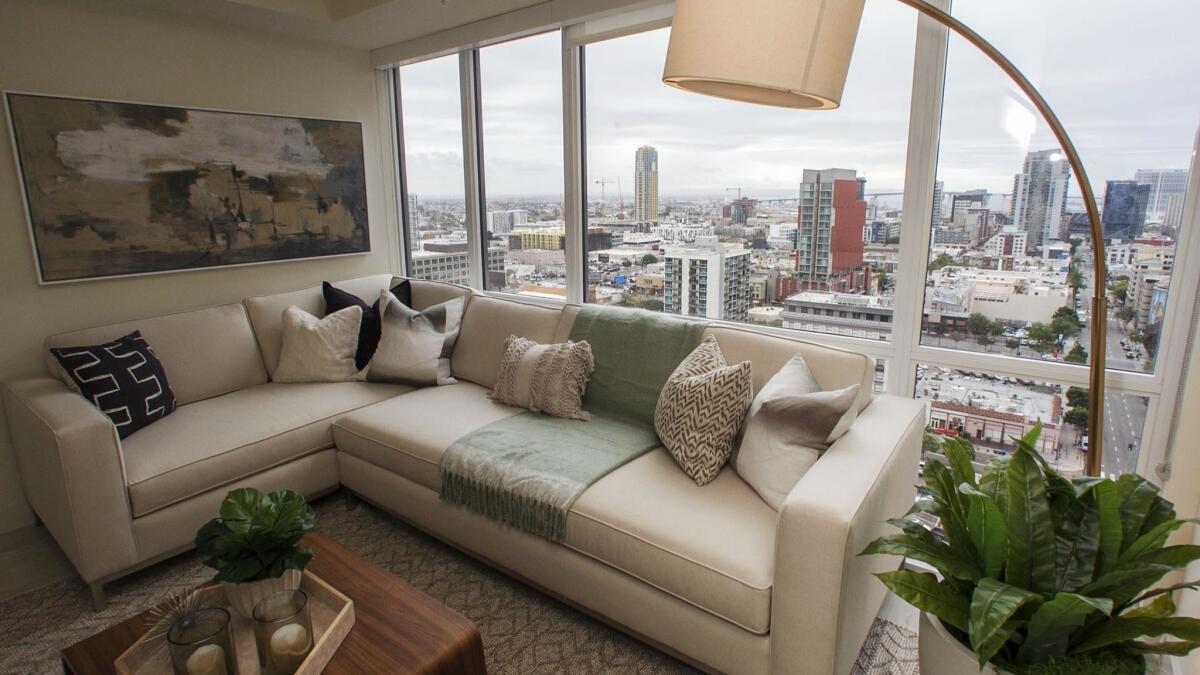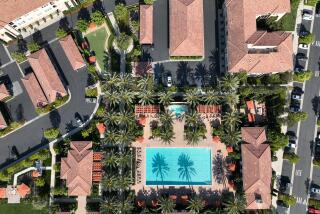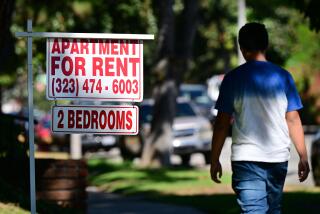Why your San Diego rent might not go up this year

Consider yourself a lottery winner if you didn’t get a rent increase in San Diego the last four years.
The region experienced double-digit percentage rent gains in the years after the recession, often growing at a quicker pace than Los Angeles and San Francisco.
Yet San Diego County rental increases at the start of this year have slowed considerably, rising around 1 percent to 2.5 percent annually. That’s down from the more than 7 percent rental hikes seen in 2015.
Real estate website Apartment List released a study this week that showed San Diego County rents had gone up 1 percent in a year. That was similar to annual growth in Los Angeles (about 1.1 percent), Sacramento (1.4 percent), San Francisco (1.8 percent). San Jose, in the heart of housing-starved Silicon Valley, saw a 3.1 percent rent increase.
The biggest increases in large cities were Phoenix at 3.6 percent and Las Vegas at 3.1 percent.
Apartment List said annual rents were up 0.9 percent nationwide. Chris Salviati, economist with the research and listing website, reasoned the slowdown was a result of surging multifamily construction that meant more competitive pricing for renters.
Even with rent increases slowing down, the San Diego metropolitan area is still the No. 9 costliest rental market in the nation, said real estate website Zumper.
“San Diego is still one of the most expensive markets,” Salviati said. “Even with this slowdown, you are still in a really pricey market that is kind of unaffordable for a lot of people.”
The median rent in San Diego County in February was $1,560 a month for a one-bedroom apartment and $2,030 for a two-bedroom, said Apartment List. The chance of getting a rent increase depended largely on where a person was renting.
Highest-cost markets
Carlsbad was the most-expensive place to rent with a monthly median rent for a one-bedroom at $1,879, increasing 1.3 percent in a year. It was followed by Encinitas at $1,863, down 0.3 percent. Oceanside had the biggest increase of any city, up 1.5 percent, at $1,771 a month.
Mid-range markets
Chula Vista’s monthly median rent for a one-bedroom was $1,632, increasing 1.3 percent in a year. San Diego’s median rent was $1,561, up 1 percent.
San Marcos’ monthly median rent was $1,527, up 1.2 percent in a year. Escondido was $1,425, up 1.5 percent. Vista was about the same at $1,423 month, up 1.1 percent in a year.
Lower-cost markets
Vista’s median monthly rent for a one-bedroom was $1,423, up 1.1 percent in a year. National City was $1,039, down 11 percent in a year. Salviati couldn’t say for sure if it made a difference, but National City was embroiled in a push for rent control all year that eventually was voted down in November.
Alan Nevin, industry analyst at Xpera Group, said the San Diego market is taking a breather after substantial increases. He also suspected a lot of the new complexes opening may have set the bar too high.
“We have ramped up prices much faster than we should have and we just sort of topped out,” he said. “I’m not convinced that there’s enough folks that live in this community that can afford $3,000-$4,000 a month.”
Predictions are mixed on what will happen next on rent. Many large real estate firms are predicting higher rent increases brought on by barriers to homeownership, such as fluctuations in mortgage interest rates.
A report from Marcus & Millichap late last year said the gap between a monthly mortgage and the average rent made renting a necessary option for most San Diegans, keeping demand for apartments high. A similar study from real estate investment and management firm Jones Lang LaSalle, or JLL, also released at the end of last year predicted rents would continue to rise because homes for sale in the lower and mid-price housing tiers would keep would-be buyers in the rental market.
Apartment List used data from private listing websites, statistics from the Census and its own listings on its website. Other real estate trackers have shown similar data, although most use a straight average instead of a median.
CoStar said the average asking rent in San Diego County has gone up about 2.5 percent in a year as of early March, using its database of 257,820 apartments. It is a major drop from the third quarter of 2015 when rent rose 7.5 percent annually.
CoStar’s forecast is less optimistic than Marcus & Millichap and JLL. It predicts yearly rent growth to be below 2.5 percent until 2023.
Business
phillip.molnar@sduniontribune.com (619) 293-1891 Twitter: @phillipmolnar
ALSO
Is San Diego County done building single-family homes?
San Diego County apartment rush continues. More than 4,500 planned for ’19
New Tijuana condo towers will hit record heights







